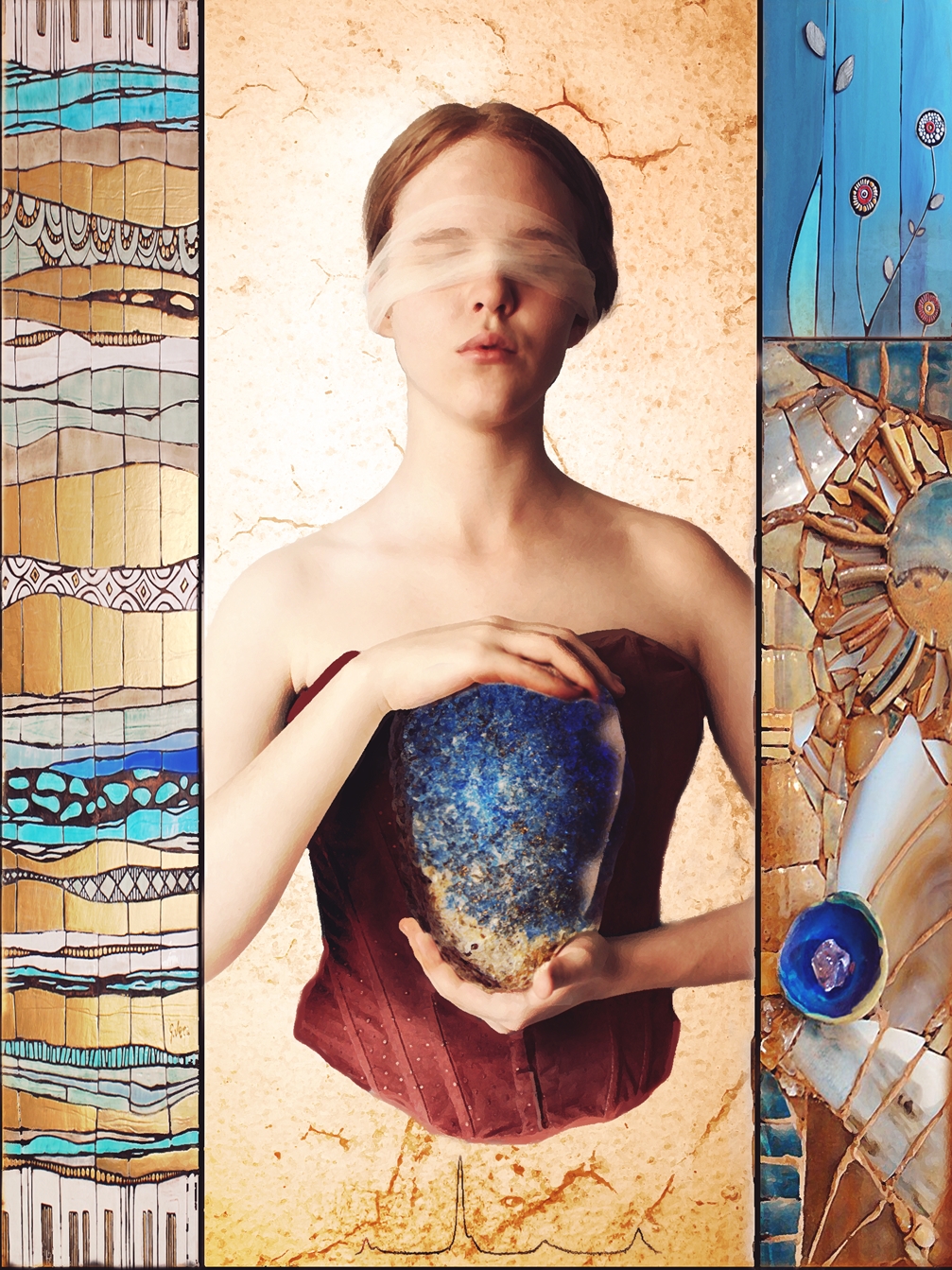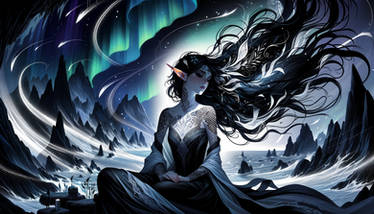ShopDreamUp AI ArtDreamUp
Deviation Actions
Suggested Deviants
Suggested Collections
You Might Like…
Description
This is the first piece of a gallery dedicate to the pigments in Art. I have a Bachelor in Conservation and Restoration of Cultural Heritage and one of my favourite subject was the history of colours and pigments' chemistry and identification by the means of technologies such as Raman spettroscopy. This illustration represents the pigments Ultramarine blue and I took inspiration by pubblications/abstracts and "Bright Earth", a book written by Philip Ball. Here an extract from his work:
"As its name implied, it came from ‘over the seas’, because the mineral from which it is made was not known in the West. Ultramarine is prepared from lapis lazuli, a blue stone found in Afghanistan. For centuries, all of Europe depended on the Afghan mines for their most precious pigment, which cost more than its weight in gold.
Ultramarine was precious not just because it was a rare import, but because it was extremely laborious to make. Most mineral pigments were made simply by grinding them up. But grinding raw lapis lazuli produces a disappointingly grey powder, because of the impurities that the mineral contains. These impurities have to be separated, which is done by kneading the powdered mineral with wax and washing the wax in water – the blue pigment flushes out into the water.
This procedure must be repeated many times to fully purify the pigment. In most of the altarpieces of the Middle Ages, the Virgin Mary is shown in blue robes. Many art theorists have attempted to explain the symbolic significance of the blue: that it conveys humility, virtue and so forth. But the main reason for this choice of colour is that the artist would naturally have lavished the most precious pigment on the most holy aspect of the painting....
...The use of oils also compelled some changes in pigment use, because some colours look different when bound in oil from when bound in water or egg yolk. In particular, both ultramarine and vermilion are more transparent and less brilliant in oil.
This forced painters to adulterate ultramarine by mixing it with a little lead white to keep it strong and opaque, which helped to erode its mystique. As a result, artists began to feel more free to use a whole range of lighter blues in their works.
The art historian Paul Hills says that “Blue by the fifteenth century was moving away from its association with starry night, the vault of the heavens, to the changeful sky of day.”
Credits.
Model
Paper background
For other elements I used my stock
"As its name implied, it came from ‘over the seas’, because the mineral from which it is made was not known in the West. Ultramarine is prepared from lapis lazuli, a blue stone found in Afghanistan. For centuries, all of Europe depended on the Afghan mines for their most precious pigment, which cost more than its weight in gold.
Ultramarine was precious not just because it was a rare import, but because it was extremely laborious to make. Most mineral pigments were made simply by grinding them up. But grinding raw lapis lazuli produces a disappointingly grey powder, because of the impurities that the mineral contains. These impurities have to be separated, which is done by kneading the powdered mineral with wax and washing the wax in water – the blue pigment flushes out into the water.
This procedure must be repeated many times to fully purify the pigment. In most of the altarpieces of the Middle Ages, the Virgin Mary is shown in blue robes. Many art theorists have attempted to explain the symbolic significance of the blue: that it conveys humility, virtue and so forth. But the main reason for this choice of colour is that the artist would naturally have lavished the most precious pigment on the most holy aspect of the painting....
...The use of oils also compelled some changes in pigment use, because some colours look different when bound in oil from when bound in water or egg yolk. In particular, both ultramarine and vermilion are more transparent and less brilliant in oil.
This forced painters to adulterate ultramarine by mixing it with a little lead white to keep it strong and opaque, which helped to erode its mystique. As a result, artists began to feel more free to use a whole range of lighter blues in their works.
The art historian Paul Hills says that “Blue by the fifteenth century was moving away from its association with starry night, the vault of the heavens, to the changeful sky of day.”
Credits.
Model
Paper background
For other elements I used my stock
Image size
1007x1343px 1.18 MB
Make
Canon
Model
Canon PowerShot A430
Shutter Speed
1/60 second
Aperture
F/5.6
Focal Length
5 mm
Date Taken
Dec 24, 2007, 4:38:59 PM
Comments0
Join the community to add your comment. Already a deviant? Log In





































